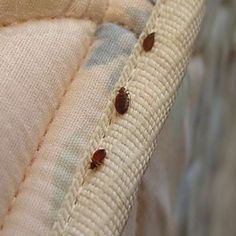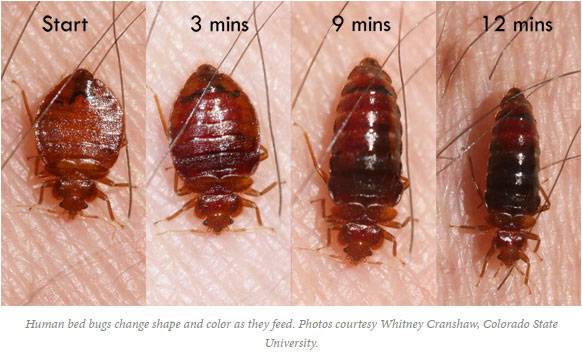Skilled Exterminator Arlington VA for Bed Bugs and Other Pests
Skilled Exterminator Arlington VA for Bed Bugs and Other Pests
Blog Article
Obtain Informed Regarding the Types of Parasite Control Techniques and Their Advantages for Homeowners
Comprehending the numerous insect control techniques available to property owners is crucial for efficient parasite management. From chemical and organic strategies to cultural and mechanical methods, each approach presents special advantages that can considerably affect both wellness and ecological safety and security. Property owners that are educated can make calculated choices that not only address pest issues however likewise boost the total top quality of their living environment. As we explore these methods additionally, it comes to be clear that the decision-making procedure entails more than just immediate results; it touches on long-term sustainability and wellness. What elements should influence these vital choices?
Chemical Insect Control Methods
Chemical bug control approaches are a crucial element of integrated pest monitoring approaches for house owners looking for efficient services to pest infestations. These approaches include the application of chemical substances designed to remove or discourage pests that intimidate individual property, wellness, and comfort. Usual chemicals utilized include pesticides, herbicides, rodenticides, and fungicides, each customized to target details bugs.
The primary benefit of chemical pest control is its quick effectiveness; several formulations give immediate outcomes, minimizing pest populations substantially in a short time. Furthermore, advances in chemical formulas have actually resulted in items that are a lot more eco-friendly and have reduced toxicity levels for non-target microorganisms when used correctly.

Organic Bug Control Methods
Natural parasite control techniques have gained prominence as property owners look for much safer and much more sustainable choices to conventional chemical approaches. Organic insect control techniques use natural killers, bloodsuckers, or pathogens to take care of insect populaces successfully. This method is not just ecologically friendly but likewise minimizes the threat of damage to non-target varieties, including beneficial bugs and wildlife.
Among the most usual organic control approaches includes presenting all-natural killers into the setting. As an example, ladybugs can be used to regulate aphid populations, while nematodes target soil-dwelling parasites like grubs. In addition, parasitoids-- organisms that live on or within a host-- can be employed to manage specific insect varieties by laying eggs inside them, ultimately bring about their demise.
One more strategy is using biopesticides, which are obtained from natural products such as microorganisms, plants, or minerals (bed bug exterminator). These items can effectively target bugs while posturing very little risk to pet dogs and humans. In general, biological bug control methods give property owners with an effective methods of parasite management that aligns with environmental principles, promoting a healthier living setting while reducing dependence on artificial chemicals
Mechanical Insect Control Methods
Mechanical parasite control approaches include a range of techniques that literally stop or remove bugs without using chemicals. These strategies are specifically beneficial for homeowners looking for eco-friendly alternatives while ensuring the safety and security of their living spaces.
One usual approach is using barriers, such as displays, traps, and nets, which stop bugs from going into homes or specific locations. As an example, setting up window displays can effectively maintain bugs out, while using physical obstacles around gardens can deter bigger bugs like rabbits or deer. Furthermore, mechanical traps made for rodents can record and eliminate these pests without the demand for harmful materials.
One more efficient strategy includes using brooms and vacuum cleaners to eliminate parasites directly from surface areas. Routine cleansing and maintenance can significantly decrease parasite populations by removing food sources and concealing spots. Moreover, using gadgets like ultrasonic parasite repellents can discourage numerous pests with acoustic wave that are unpleasant to them yet faint to humans.
Social Insect Control Practices
Cultural bug control practices concentrate on modifying the setting and monitoring techniques to develop conditions that are less for pest problems. These techniques are fundamental in maintaining a balanced environment and reducing the reliance on chemical interventions. By changing farming techniques, homeowners can efficiently prevent parasites while advertising plant i loved this health.
One common method includes crop rotation, which interrupts the life process of bugs by transforming the kinds of plants expanded in a details location (bed bug exterminator). This not just lessens pest populaces however additionally boosts dirt wellness. In addition, intercropping-- growing diverse crops in proximity-- can confuse pests and reduce their ability to locate their preferred host plants
Water management is another critical facet of social methods. Appropriate irrigation techniques can prevent standing water, which works as a breeding place for mosquitoes and other insects. Additionally, maintaining sanitation around the home, such as regularly getting rid of particles and food waste, can substantially reduce bug destination.
Including these social techniques into a thorough bug management approach enables homeowners to develop an environment that normally discourages pests, therefore improving the performance of other control approaches while promoting lasting gardening and landscape design.

Integrated Parasite Management Approaches
Integrated Insect Administration (IPM) stands for an all natural approach that integrates different methods to properly manage insect populaces while lessening ecological influence. This technique incorporates biological, cultural, physical, and chemical practices to achieve sustainable insect control. By evaluating pest populations and their natural opponents, IPM highlights tracking and determining bugs prior to carrying out control procedures.
Among the core principles of IPM is using thresholds, which establish the level of pest activity that warrants intervention. This ensures that therapies are used just when needed, lowering the dependence on chemical pesticides. Biological control methods, such as introducing natural predators or bloodsuckers, operate in combination with cultural practices like plant turning and habitat control to disrupt pest life cycles.
In addition, IPM urges using least-toxic chemical options when intervention is required, prioritizing items that present minimal threat to non-target microorganisms and the environment. For homeowners, adopting IPM approaches not just improves the efficacy of parasite monitoring however also advertises a healthier living environment, fostering biodiversity and reducing chemical direct exposure. Eventually, IPM empowers house owners to make educated choices that balance pest control with eco-friendly responsibility.
Verdict
Finally, understanding the different bug control methods equips home owners to make informed decisions pertaining to pest management. Each method-- chemical, organic, mechanical, social, and integrated insect monitoring-- offers unique benefits that satisfy various needs and preferences. By choosing proper approaches, homeowners can successfully take care of parasite populations while reducing health and wellness threats and ecological influences. This enlightened approach adds to a healthier living atmosphere, promoting general wellness for pet dogs and family members alike.
Recognizing the different bug control techniques available to property owners is vital look these up for effective pest management.Chemical parasite control approaches are an essential part of integrated pest monitoring methods for house owners seeking reliable options to pest invasions. Overall, organic bug Learn More Here control techniques give house owners with an effective means of bug administration that aligns with eco-friendly principles, advertising a healthier living environment while lowering reliance on artificial chemicals.
Cultural pest control methods focus on changing the atmosphere and monitoring methods to create problems that are much less favorable to pest problems.In final thought, recognizing the different pest control approaches empowers home owners to make informed choices regarding pest monitoring.
Report this page